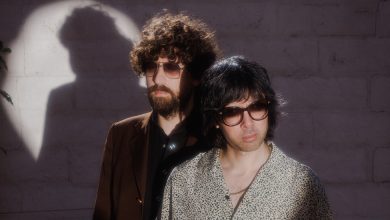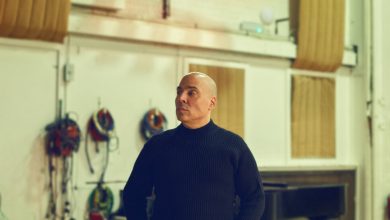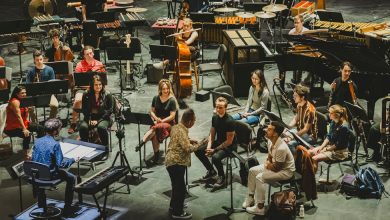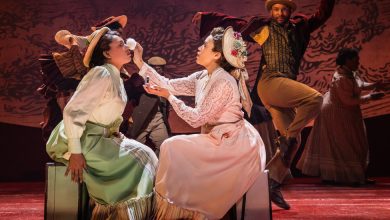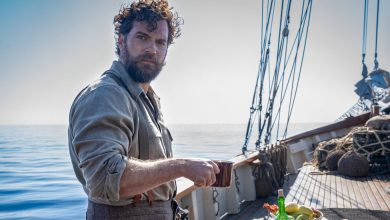Investigator Cites Video and Other Evidence Against Jussie Smollett

A detective who investigated the actor Jussie Smollett’s hate crime report took the stand on Tuesday, taking jurors through the steps investigators took to conclude that Mr. Smollett had orchestrated the attack, including securing surveillance footage and ride-share data that helped identify the two brothers at the center of the case.
The brothers, Abimbola and Olabinjo Osundairo, have told police that Mr. Smollett orchestrated a fake assault in which the Osundairos beat him while yelling racist and homophobic slurs, poured bleach on him and put a rope around his neck. The Osundairos have emerged as the critical witnesses in a case that will largely rely on their credibility.
The defense team attacked that credibility in its questioning of the detective, Michael Theis, suggesting that the police had not properly investigated accusations that one of the brothers had a history of making homophobic comments.
On the second day of the trial in Chicago, which centers on charges that Mr. Smollett made a false report to police, the actor’s defense team brought up instances in which Olabinjo Osundairo, the older brother, had asked someone on Twitter why they followed a singer who is “gay” and, in a text exchange, referred to someone as “fruity.”
“There were messages referring to an individual gay person,” Mr. Theis said. “I don’t know if they were homophobic. My understanding was he had a problem with one individual and he called him a bad name.”
The defense’s questioning prompted a series of testy exchanges with Judge James Linn, who repeatedly reminded Mr. Smollett’s lead lawyer, Nenye Uche, not to raise unsubstantiated claims.
“You can’t just throw things out there until you can prove them up,” Judge Linn said.
The defense strategy has been clear from the outset: painting the Osundairo brothers as untrustworthy people who did not like the actor and had a motive for attacking him — homophobia — that was not properly explored by the police, whom they accuse of making a “rush to judgment” in the case. Mr. Uche’s questioning also revolved around whether a third person, who the defense says is white, could have been involved in the attack and whether the police had adequately explored that angle.
As the trial’s first witness, Mr. Theis worked to counter the defense’s assertion that the police had rushed to a conclusion, describing the long days he had worked while trying to solve a case that was the subject of national outrage.
The two other witnesses who took the stand on Tuesday were Officer Muhammad Baig and Sgt. Joseph Considine, who went to Mr. Smollett’s apartment on the night of the attack after the actor’s aide had called the police. Officer Baig testified that when he had arrived at the apartment, Mr. Smollett still had the rope around his neck and told the officer that he had wanted to make sure the officers saw it before he removed it.
The prosecution showed the jury video footage, recovered by the police, that he said showed Mr. Smollett driving with the brothers on Jan. 25, which was four days before the attack and was the day they say Mr. Smollett introduced the idea of the attack to them. Mr. Uche said on Monday that the footage of the vehicle was not proof that the three men were planning a hoax.
Understand the Jussie Smollett Trial
A staged hate crime? In 2019, Jussie Smollett, an actor from the show “Empire,” told police he was the victim of a racist and homophobic attack in downtown Chicago. The police concluded that Mr. Smollett had paid two acquaintances to stage the assault.
Others involved. Two brothers, Abimbola Osundairo and Olabinjo Osundairo, told the police that Smollett, who is black and gay, had paid them $3,500 to orchestrate the attack, directing them to shout racist and homophobic epithets at him and place a noose over his neck.
The evidence. A text message between Smollett and Abimsola Osundairo sent four days before the attack has become a key piece of evidence. In it, Smollett discussed needing help and meeting “on the low.” Security camera footage shows Mr. Smollett’s black Mercedes pulling up in an alley behind one of the brothers’ homes that afternoon.
Charges dropped. A month after the attack, the Cook County State’s Attorney’s Office dropped all charges against Mr. Smollett. The office had agreed to a plan where Mr. Smollett would do community service and forfeit the $10,000 bond paid for his release, in exchange for the office dropping the charges, with no admission of guilt.
The case is revived. Later, a judge ordered that a special prosecutor review how the Cook County State’s Attorney’s Office handled the case. On Feb. 11, 2020., the special prosecutor, Dan K. Webb, announced that a grand jury had revived the case with a new indictment, and he criticized the earlier decision to drop the case.
Mr. Smollett’s trial began on Monday with jury selection and opening arguments, during which the special prosecutor in the case, Dan K. Webb, laid out what he saw as Mr. Smollett’s motive for staging the attack. Days earlier, Mr. Smollett had received a racist, homophobic and hate-filled letter and felt that his colleagues on the television show “Empire” did not take it seriously enough, Mr. Webb said, so he decided to plan a fake hate crime to get their attention.
According to police reports, Mr. Theis and his colleagues homed in on the Osundairo brothers as suspects through surveillance footage of the area near where the attack occurred and through records from an Uber ride the brothers took to a spot near the location. The police arrested the brothers in February 2019 after they returned from a trip to Nigeria, and they agreed to cooperate in the investigation, according to police records.
Much of the prosecution’s evidence comes from information that the brothers led the police to after they were arrested. The jury was shown surveillance footage of the brothers purchasing the supplies used in the attack: gloves, ski masks and a red hat at a beauty supply store, as well as a rope at a craft store, which investigators say was bought with a $100 bill that Mr. Smollett gave to the brothers.
The jury also saw a copy of a $3,500 check made out to Abimbola Osundairo, which the prosecution said Mr. Osundairo had viewed as intended partly to thank him for agreeing to take part in the planned attack. Mr. Uche, Mr. Smollett’s lead lawyer, said that the check was payment for physical training for a music video.
